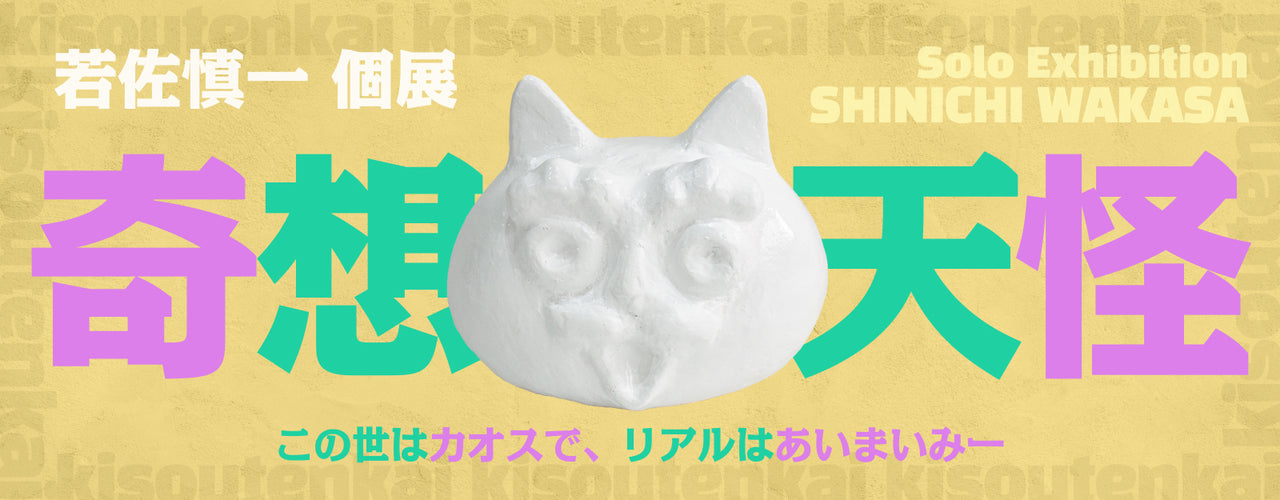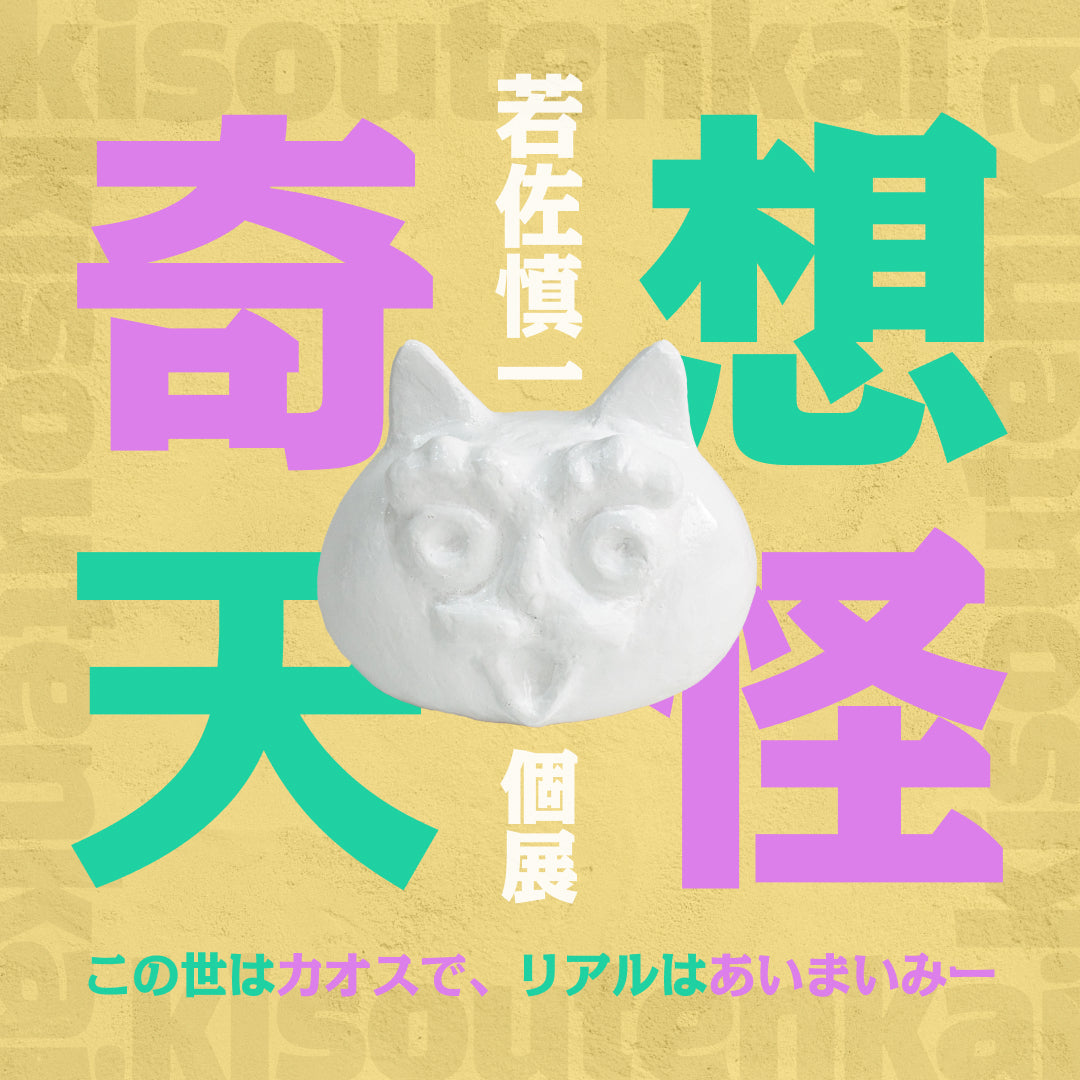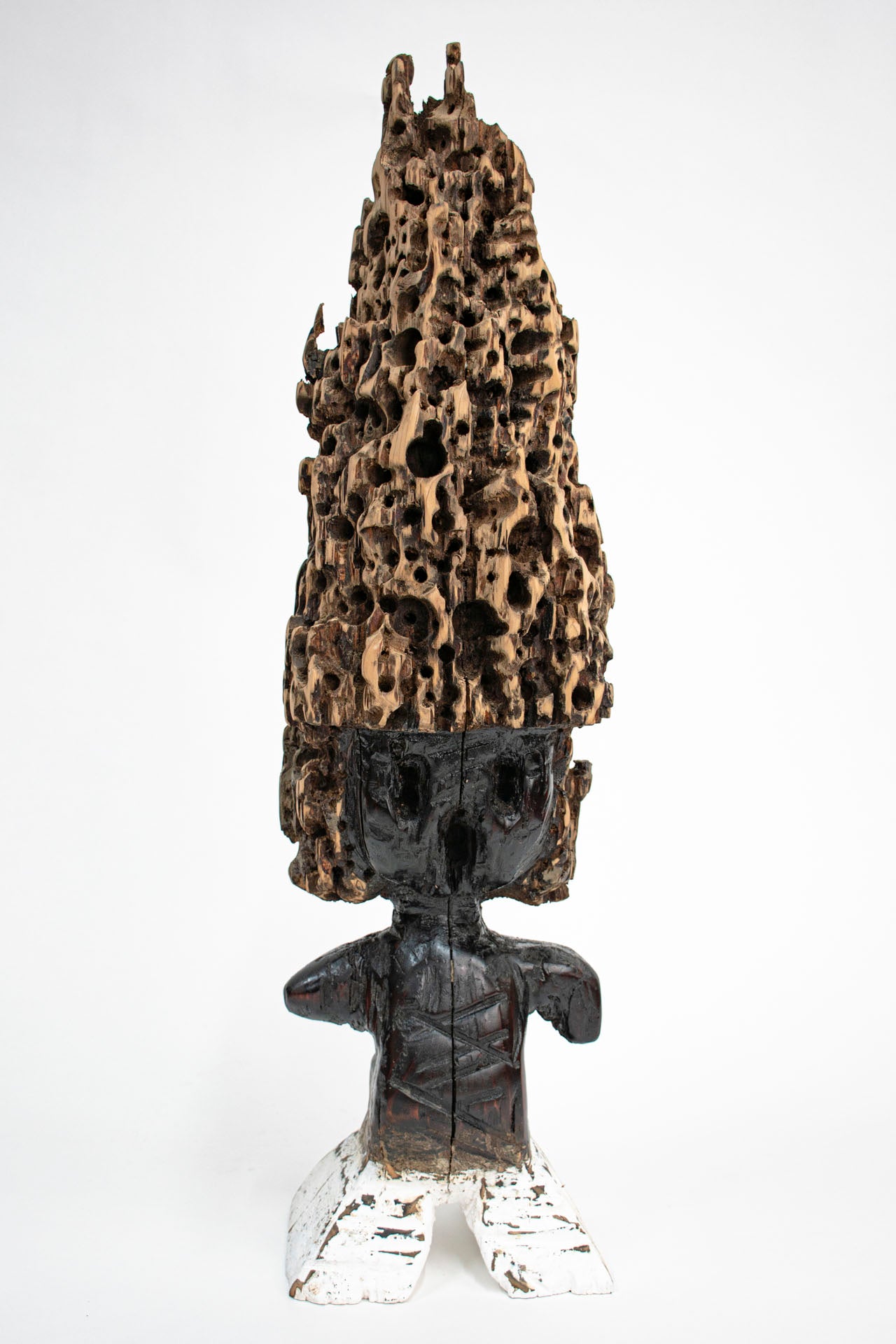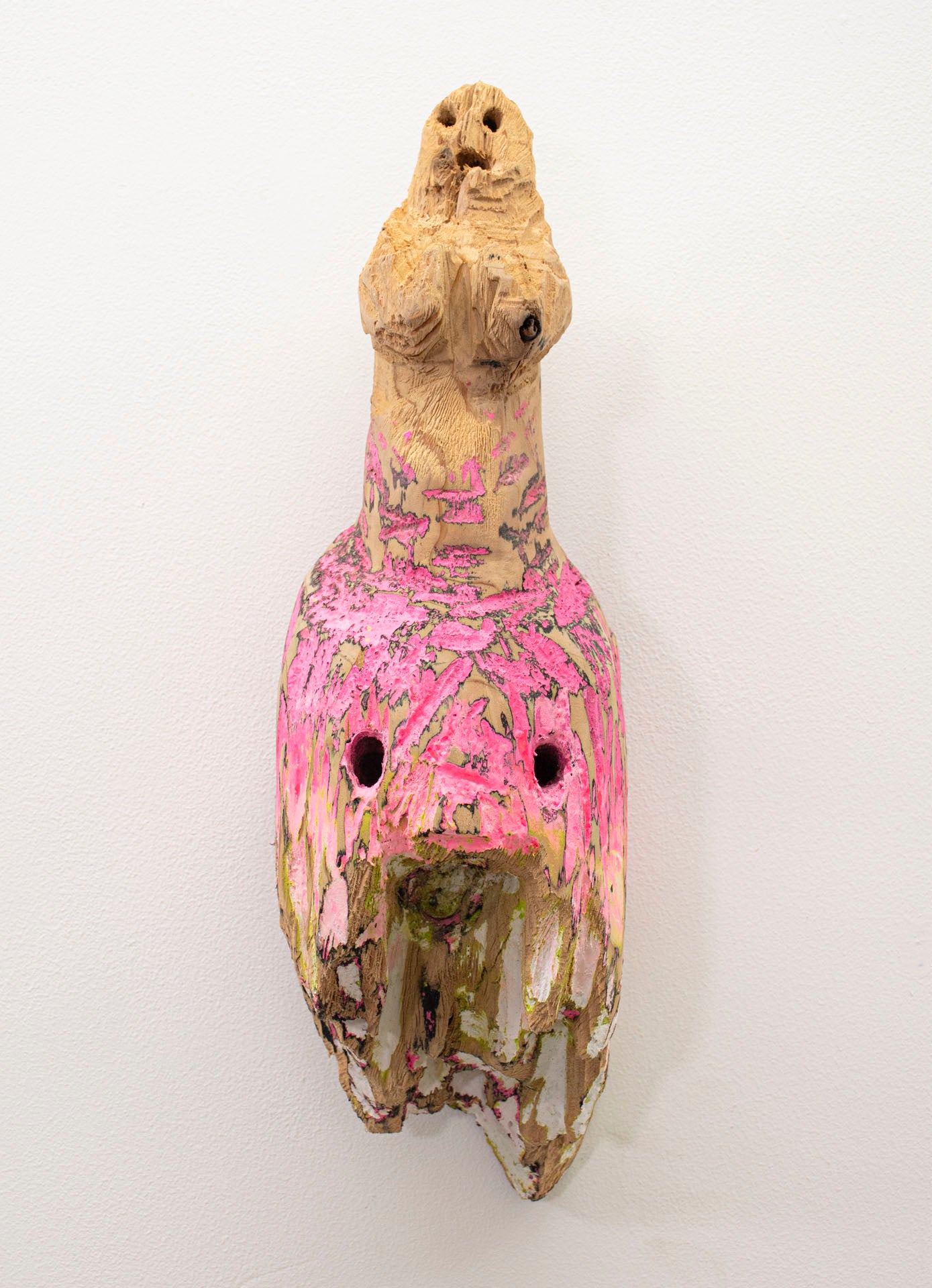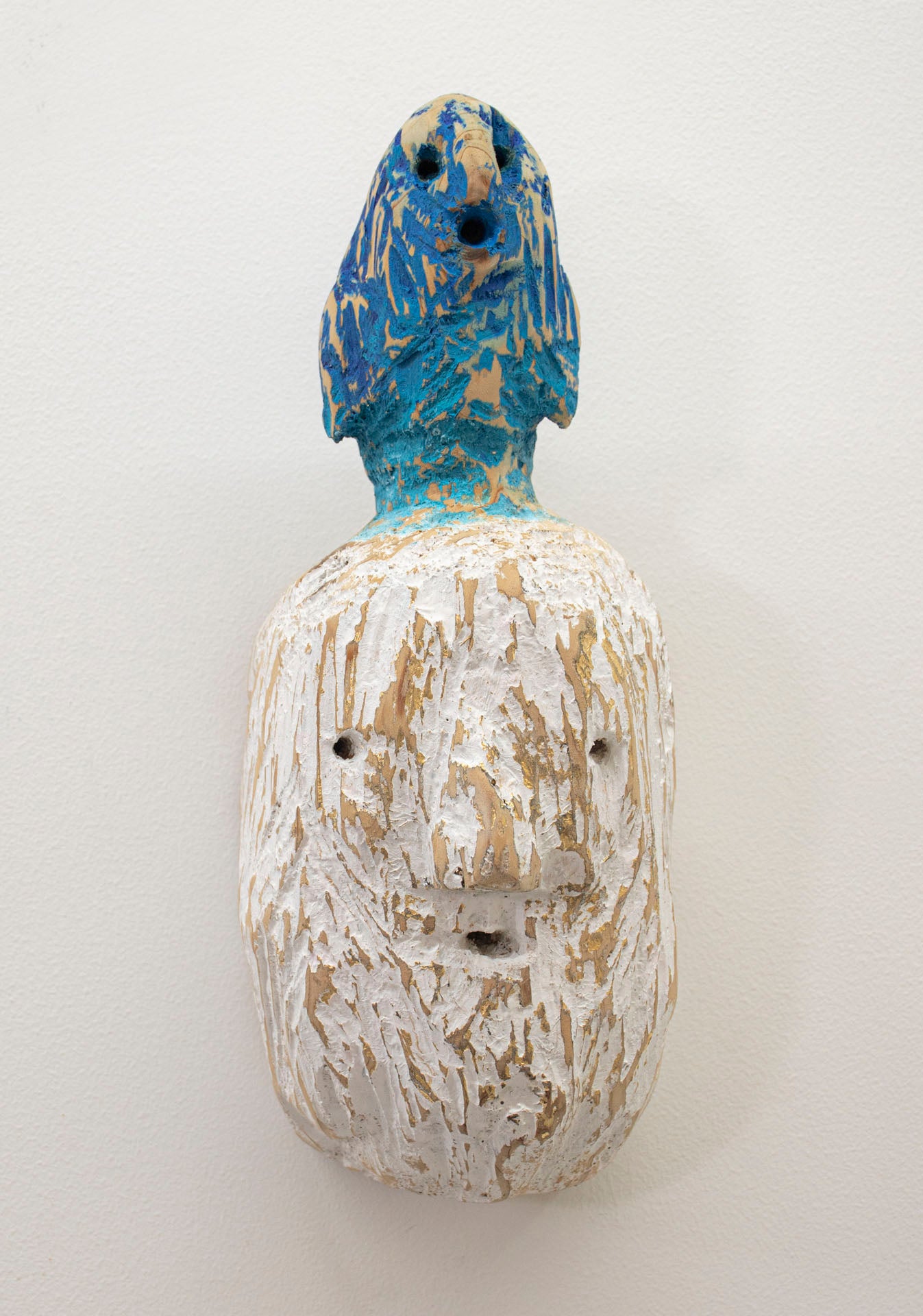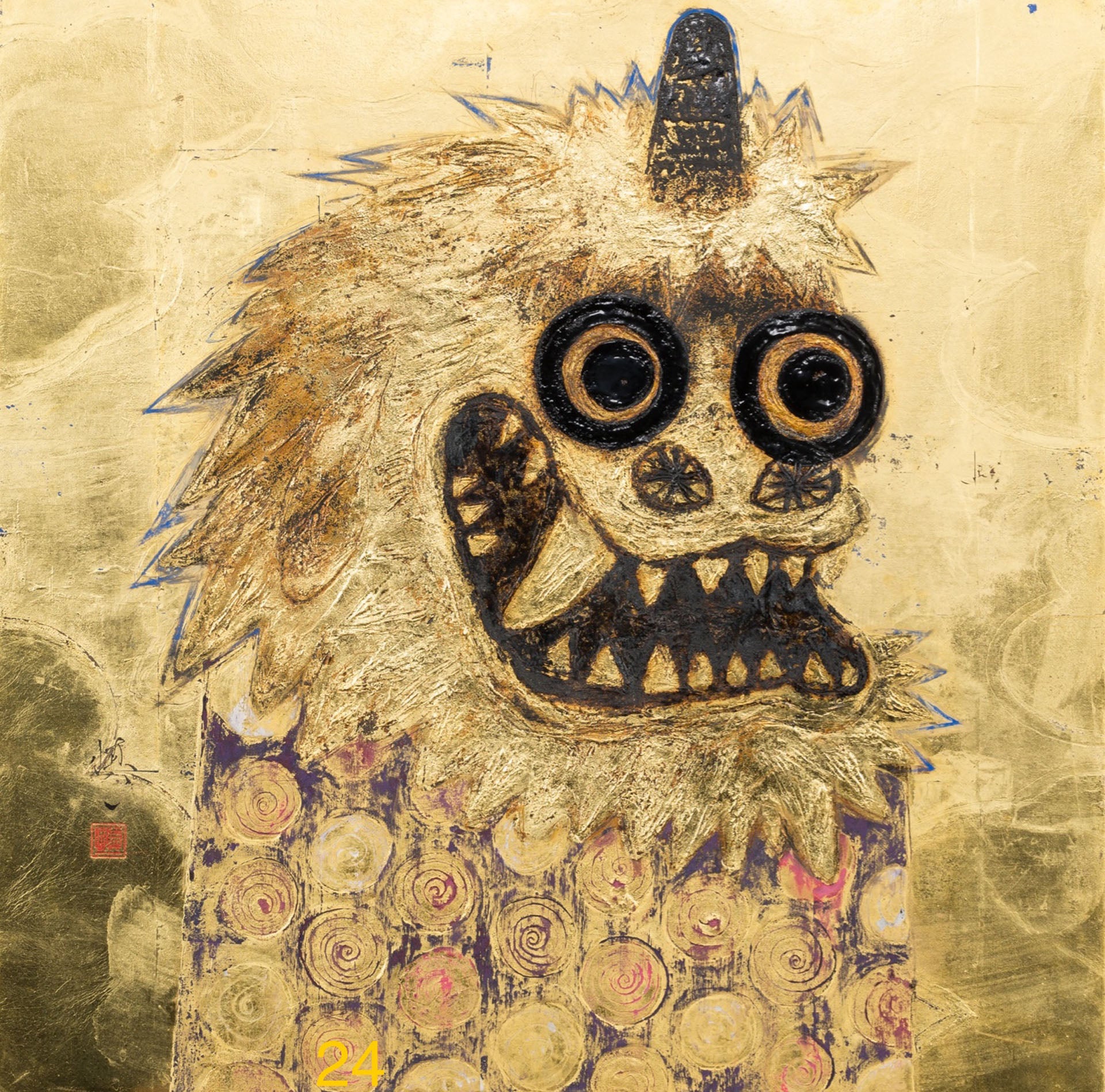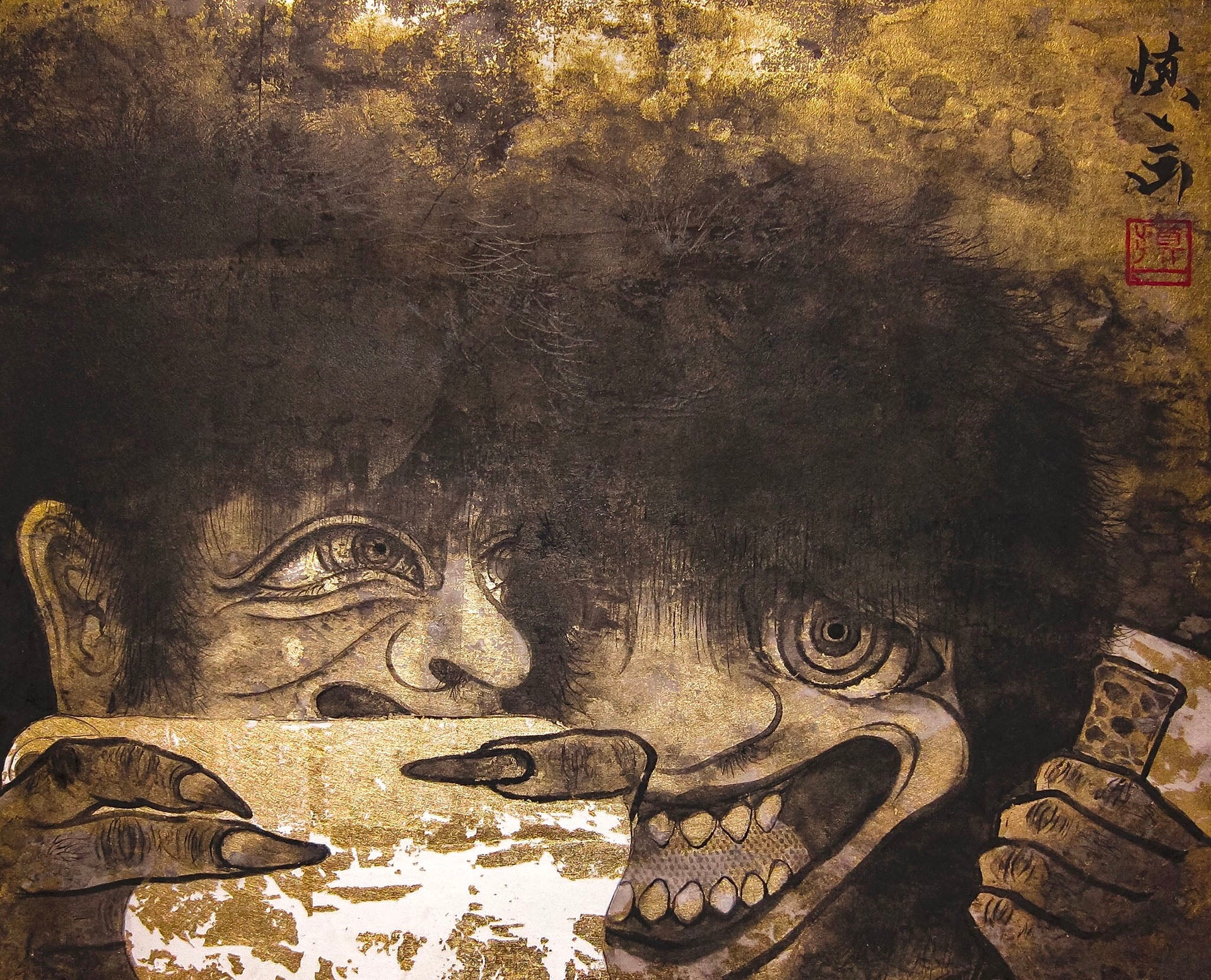Depicting the chaos of the world of Hyakki Yako
The beckoning cats and lion dogs have expressions reminiscent of characters from a nonsensical comedy manga. There is an uneasy atmosphere floating about them. Wakasa Shinichi is an artist who draws motifs that have been depicted since ancient times as objects of faith in Japan with a modern sensibility, evoking a Japanese sensibility that finds beauty in the invisible realm.
He majored in Japanese painting at the Department of Fine Arts, Faculty of Arts, Hiroshima City University, and began working as an artist in earnest in 2013. While drawing on the genealogy of Japanese art before the Edo period, he expresses the concept of Japanese beauty through a style that incorporates pop culture expressions from manga, games, and anime. This exhibition will feature approximately 30 two-dimensional and three-dimensional works.
"Since ancient times, the Japanese have not feared nature as a threat, but have accepted it as an object of awe. There is a belief that gods reside in all things, and people have coexisted with nature and animals in their daily lives through their reverence and prayers. I create my works while thinking about how this form of awe towards invisible beings has been conveyed to the present day."
Wakasa says that Japan's unique values, in which humans are shaped by the local climate and are part of the vastness of nature, can provide important hints for our chaotic world.
"Since the internet revolution of the 1990s, the world has been changing at an incredible speed. In an age where we are connected to people with incompatible values, people are being asked, what is the purpose of life and how should we live? Who are we?"
The aesthetic sense of "ambiguity"
With the recent rise of technologies such as AI and VR, it seems as though a future will come where it will become impossible to distinguish between virtual and real, but reality lies in things that have withstood the ravages of history.
This is why Wakasa uses natural art materials such as glue and lacquer, which have been used since ancient times in Japan, and subjects such as the maneki-neko cat, which has been drawn for hundreds of years. He also pursues the identity of "living" by incorporating the essence of manga and anime, which influenced him in the same era. What he shows is something universal to all humans.
In expressing the universal, Wakasa attempts to "dissolve boundaries." In "Super Magenta Maneki-Neko," the figure of the maneki-neko becomes unclear as it is covered in sparkling light. Light is a sublime thing that moves the human heart irresistibly, and it is seen as a motif that annihilates the boundaries of preconceived notions and common sense. The painting depicts a utopian worldview in which demons and monsters coexist.
"Japanese people have a culture that values ambiguity. It's really interesting how boundaries change depending on the time and situation. I think it's a distinctive feature of Japan that we can remove various frameworks and create chaotic situations. I think that Japanese values are a good match for aiming for coexistence in a world that will become increasingly chaotic in the future."
Imagine there is something
In Japan, since ancient times, imperfection and irregularity have been valued, and beauty has been found in "ambiguity." At the same time, the pursuit of proper manners has led to the stylization of "omotenashi" (hospitality). There is also a physical sensation that allows one to reflect on the transitions of things, space, and time.
"The meaning of the work changes depending on when, where and how it 'occurs', so I wanted to dissolve the boundaries between two-dimensional and three-dimensional, and to make the work blend with the space. In this way, the richness of life lies in what the viewer reflexively feels when confronted with the work, what they sense with their five senses."
The semi-three-dimensional works he has been working on in recent years are also an attempt to transcend the flatness of painting. The rough outlines of his all-white three-dimensional work, White Cat, are an ambiguous beauty that blends in with the white cube of the gallery space.
In the ancient Japanese view of nature, all things that live outside of the mountains, rivers, and sky are considered to be "things that give birth" and have been collectively referred to as "insects (birth)." This refers to things that appear out of nowhere, and is said to have led to the idea of nature that "things are just as they are."
Shinichi Wakasa dissolves the boundaries of modern Japanese painting concepts and practices the art of nature. In this exhibition, we explore the icons of Japan that will be passed down to the future, as they appear from nowhere, in the presence of demons and monsters.
